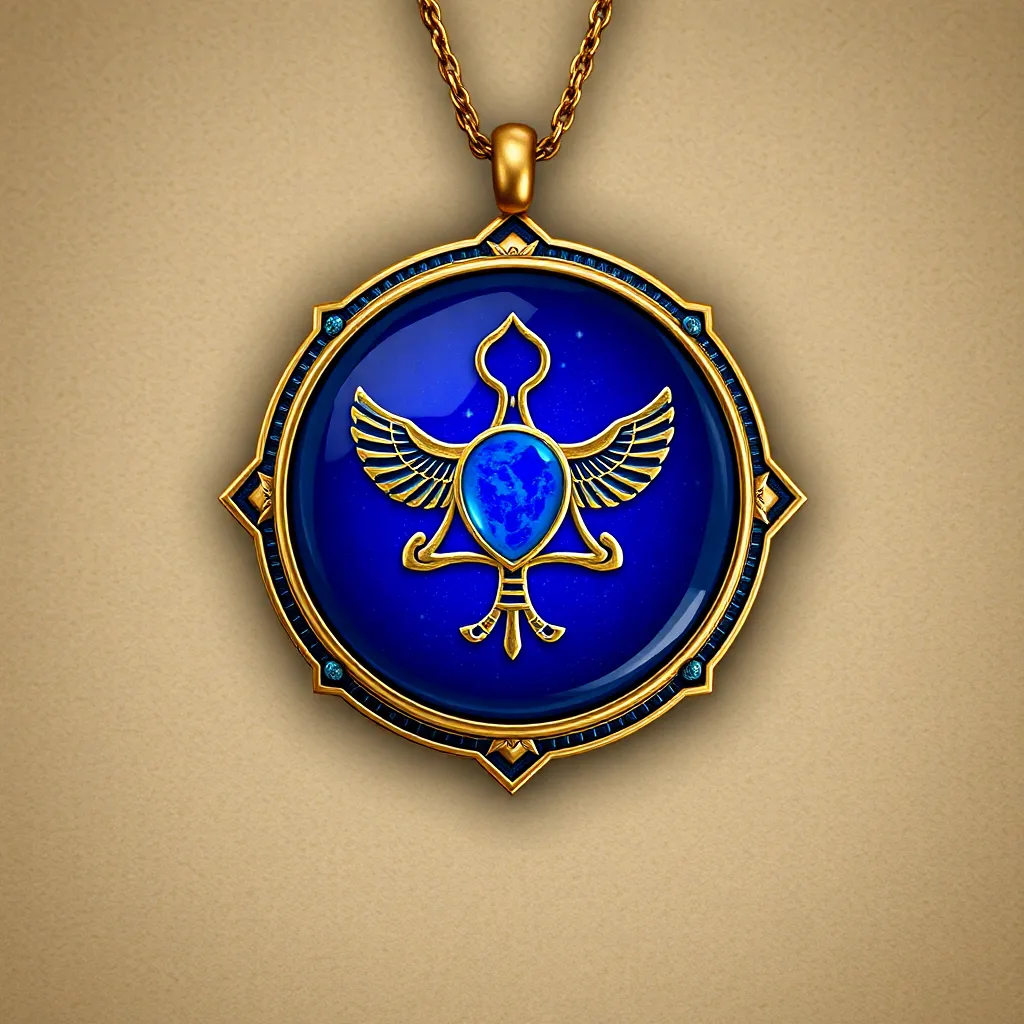The Symbolism of the Lapis Lazuli in Egyptian Amulet Design
I. Introduction
Lapis lazuli, with its deep blue hue flecked with golden pyrite, has captivated humanity since ancient times. In ancient Egypt, this gemstone held immense significance, not only for its beauty but also for its symbolic meanings and associations. Amulets, which were an essential part of Egyptian culture, served as protective charms imbued with spiritual energy. This article delves into the rich symbolism of lapis lazuli in the design of these amulets, revealing its cultural importance and the beliefs surrounding it.
II. Historical Context of Lapis Lazuli in Ancient Egypt
The history of lapis lazuli in ancient Egypt is fascinating, marked by trade and cultural exchange.
A. Origins and discovery of lapis lazuli
Lapis lazuli is a metamorphic rock primarily composed of lazurite, along with calcite, pyrite, and other minerals. Its origins can be traced back to the Badakhshan region of Afghanistan, where it was mined and traded as early as 4000 BC.
B. Trade routes and its introduction to Egypt
Through extensive trade networks, lapis lazuli made its way to Egypt via the Silk Road and other routes. By the time of the Old Kingdom, lapis lazuli was highly sought after and began to feature prominently in jewelry and amulets.
C. Cultural significance in various dynasties
Throughout different dynasties, lapis lazuli’s significance evolved. It was especially popular during the Middle Kingdom and the New Kingdom, where it was considered a royal stone associated with the gods.
III. Characteristics of Lapis Lazuli
Understanding the characteristics of lapis lazuli helps appreciate its value in ancient Egypt.
A. Physical properties and appearance
Lapis lazuli is characterized by its intense blue color, often interspersed with golden flecks of pyrite. Its rich color was often associated with the heavens, making it a powerful symbol in spiritual contexts.
B. Comparison with other gemstones used in amulet design
While other gemstones like turquoise, carnelian, and quartz were also used in amulet design, lapis lazuli stood out due to its unique color and rarity. Each stone had its own symbolic meanings, but lapis lazuli was particularly revered.
C. Perceived rarity and value in ancient times
The rarity of lapis lazuli contributed to its high value in ancient Egypt. It was often reserved for the elite, including pharaohs and high-ranking officials.
IV. Symbolism of Lapis Lazuli in Egyptian Beliefs
Lapis lazuli was steeped in symbolism, closely tied to Egyptian spirituality and mythology.
A. Representation of the night sky and the cosmos
The deep blue of lapis lazuli symbolized the night sky and was believed to connect the earthly realm with the heavens. This connection reinforced its use in burial practices to aid in the afterlife.
B. Connections to deities and the afterlife
Lapis lazuli was associated with several deities, including Isis and Horus. It was thought to provide protection and guidance in the afterlife, making it a common material in funerary amulets.
C. Associations with wisdom, truth, and enlightenment
In addition to its protective qualities, lapis lazuli was also a symbol of wisdom and enlightenment. It was believed to enhance intellect and encourage the pursuit of truth.
V. Amulet Design and Lapis Lazuli
The design of amulets featuring lapis lazuli was both artistic and symbolic.
A. Common shapes and motifs featuring lapis lazuli
Some common shapes and motifs included:
- Scarabs
- Eye of Horus
- Ankh symbols
- Deity figures
B. Techniques used in crafting amulets
Ancient artisans employed various techniques, such as carving, inlay, and polishing, to showcase the beauty of lapis lazuli in their amulet designs.
C. Role of lapis lazuli in protective and healing amulets
Amulets made from lapis lazuli were believed to offer protection from evil spirits and misfortune. They were also used to promote healing and emotional balance.
VI. Case Studies of Notable Lapis Lazuli Amulets
Several significant examples of lapis lazuli amulets provide insight into their importance in ancient Egyptian culture.
A. Examination of famous amulets and their significance
The amulet of Tutankhamun, for example, features lapis lazuli prominently, symbolizing his connection to the divine.
B. Artistic and archaeological insights from specific examples
Archaeological discoveries, such as the tomb of Seti I, have revealed exquisite lapis lazuli artifacts that reflect the high craftsmanship and spiritual beliefs of the time.
C. Historical figures associated with lapis lazuli amulets
Notable figures, including pharaohs and priestesses, were often buried with lapis lazuli amulets to ensure safe passage in the afterlife.
VII. The Legacy of Lapis Lazuli in Modern Culture
The influence of lapis lazuli continues to resonate in contemporary culture and spirituality.
A. Continuing influence of Egyptian symbolism in contemporary jewelry
Modern jewelry often incorporates lapis lazuli, drawing inspiration from its rich history and symbolism.
B. Modern interpretations of lapis lazuli amulets and their meanings
Today, lapis lazuli is seen as a stone of wisdom and intuition, often used in holistic and spiritual practices.
C. The gemstone’s role in spiritual and holistic practices today
Many individuals use lapis lazuli in meditation and energy work, believing it can enhance mental clarity and spiritual growth.
VIII. Conclusion
Lapis lazuli holds a significant place in the tapestry of ancient Egyptian culture, particularly in the realm of amulet design. Its vibrant color and rich symbolism connected the physical and spiritual worlds, offering protection, wisdom, and enlightenment to those who wore it. The allure of lapis lazuli endures even today, inviting further exploration of its meanings and the profound symbolism of ancient Egyptian beliefs.




